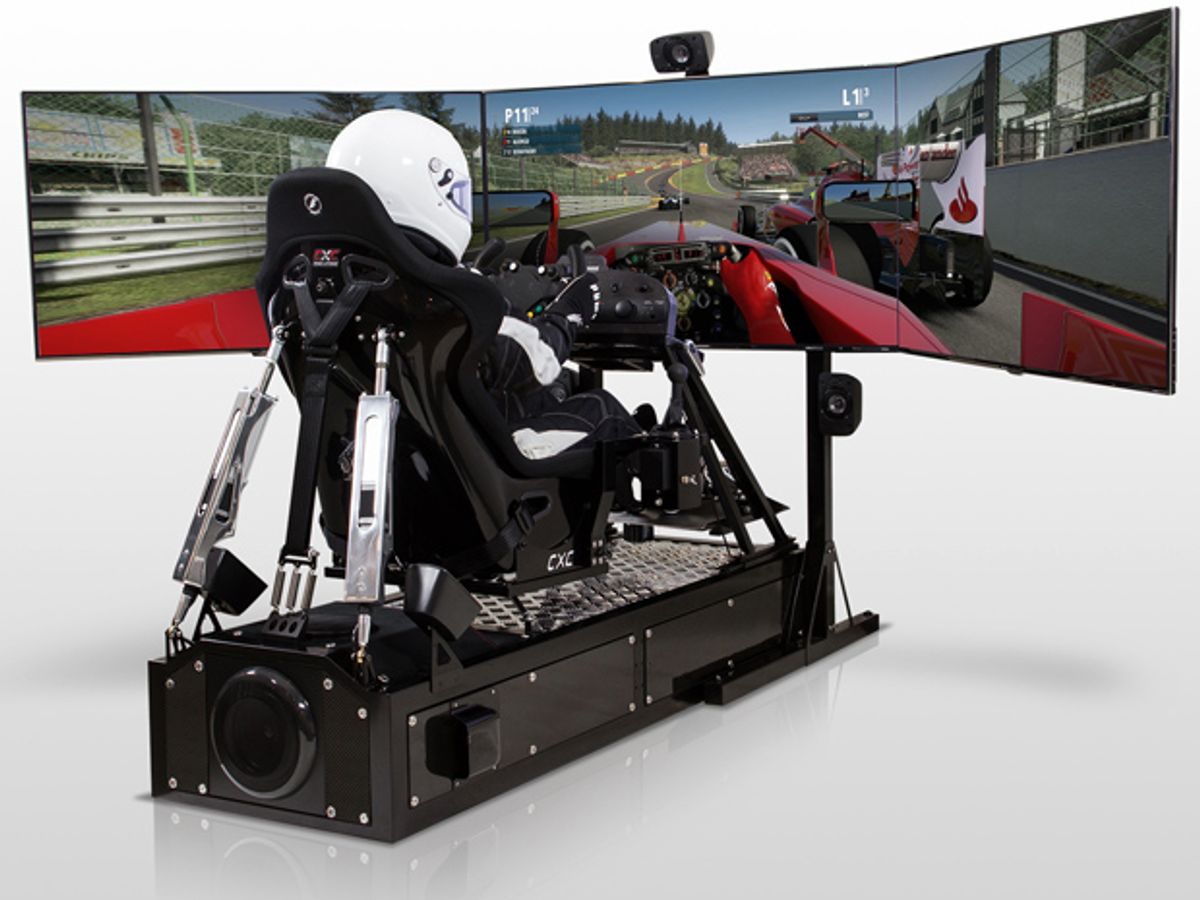If your last experience of a racing game was the old Pole Position on Atari in the ‘80s, you’ve missed the digital revolution that’s made simulators so realistic that you can almost smell the gasoline.
The latest, Motion Pro II from Los Angeles-based CXC Simulations, is perhaps the most true-to-life experience yet—as you’d expect from a professional simulator and training tool that starts from US $54,000. At its pulsing heart is a new force feedback steering controller than understands the moves of more than 1,000 cars—classic and modern, street machines or legendary racers of every vintage—and mimics minutia like the brutal forces of the late Ayrton Senna’s F1 McLaren in mid-corner, the feel of tires as they wear, and the lightening of a car as its fuel load decreases.
The steering system directly connects a direct-drive servo motor to the steering shaft, eliminating belts and gears. CXC’s previous system could generate 2 newton meters of physical feedback, but the new one can deliver 16 Nm, enough to mimic the destructive forces of a real-world crash. That is, if the company cranked it up that high.
“If you hit the wall in an Indy Car and don’t take your hands off the wheel, you’ll break your wrists,” says Chris Considine, a former racer and CXC founder. “Our wheel is a one-to-one replication of that, but we don’t turn it up that high. It’s the first time we’ve been able to replicate racing forces so high that it introduces liability questions,” he says with a laugh.
More important, he says, “We can now replicate not just the power, but the fidelity. All the tiny pieces of information that come through the wheel are so crucial to a driver,” from simulated cracks on the pavement at Watkins Glen to rumble strips on the streets of Monaco.
Hundreds of the world’s racetracks, current or historic, are laser-scanned into the system at sub-millimeter accuracy, enough to show the leaves on the trees. Professional racers can thus quickly and confidently translate their simulated experience to the real world.
The company includes a former Ferrari F1 engineer and Maserati test driver. Dozens of pro racers, including Porsche factory driver Patrick Long, have helped develop and hone the system. Racing teams are using the Motion Pro II to develop and test their own cars as in 3-D CAD design, translating up to hundreds of thousands of data points—on fluid dynamics, aerodynamics, materials, everything—into the simulation.
Nestled into the driving rig, pilots get a serious physical workout via low-mass motion generators that simulate up to 2 g’s of lateral force. Seat belt tensioners simulate powerful braking forces. Vibration generators pulse through the system’s steering wheel, chassis, pedals and switches, while panoramic video screens and a powerful 5.1 surround sound system fill in the other senses. The Motion Pro II is powered by an Intel Core I7 Extreme Edition. The rig can be expanded into a top-level flight simulator as well.
Here’s some footage of pros using the system:
CXC’s unit has also been used to develop and test racetrack designs before the first asphalt has been poured, including the posh-and-private Thermal Club, in California’s Coachella Valley. And while a few home users have sprung for what Considine calls “the ultimate big-boy toy,” it’s actually designed to save money for pros whose competitiveness and safety is anything but a game.
“The company was born from a need for a cheaper way to test and train,” and to do it without physical risk to drivers as they push their limits, lap upon lap, in what’s edging closer and closer to virtual reality, Considine says.
“Unlike a real race car,” he says, “the simulator costs you money once, and never again.”
Lawrence Ulrich is an award-winning auto writer and former chief auto critic at The New York Times and The Detroit Free Press.



